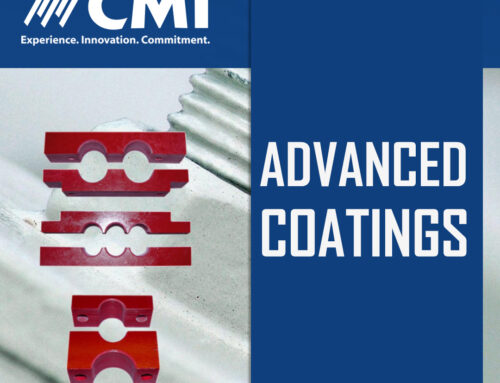Additive manufacturing, or 3D printing, is changing how industries create products. It uses different materials like metals, polymers, and ceramics to build items layer by layer. This method makes it possible to customize designs and reduce waste. The materials chosen have a significant impact on the strength and durability of the finished product. For more details, you can explore this guide from MIT Sloan.

Understanding the materials in additive manufacturing is crucial for successful production. Each material has unique properties that affect how it behaves during and after printing. Factors like strength, ductility, and surface finish can vary. Companies focusing on additive manufacturing materials are researching ways to improve these qualities.
Selecting the right material involves balancing multiple factors, including the product’s intended use, environmental considerations, and cost. Companies must also comply with industry standards and regulations. With recent advancements, the future of additive manufacturing looks promising and full of innovations.
Key Takeaways
- Additive manufacturing transforms product creation with diverse materials.
- Material properties significantly influence final product quality.
- Future innovations and regulations drive advancements in the field.
History of Additive Manufacturing Materials

Additive manufacturing materials have advanced significantly over the past few decades. Key developments include early innovations in the 1980s, followed by more diverse and sophisticated materials in the 21st century.
Early Developments
The journey of additive manufacturing materials began in the 1980s. Early techniques primarily involved plastic materials, as plastics were easy to shape and manipulate. Among the first materials used was a photosensitive polymer for stereolithography, which laid the foundation for more complex materials.
Dr. Hideo Kodama filed the first additive manufacturing patent, which set the stage for future innovations. The 1980s marked the introduction of stereolithography by companies like 3D Systems, which used liquid resins that hardened when exposed to light. This innovation revolutionized early manufacturing processes, enabling the more precise creation of prototypes and models.
By the late 1980s and early 1990s, other plastic-based materials, such as photopolymers and thermoplastics, were being explored. These developments were critical in establishing a baseline for further exploration into diverse material categories.
Advancements in the 21st Century
The 21st century saw substantial progress in additive manufacturing materials, diversifying beyond essential plastics. One significant advancement is the adoption of metals like titanium and aluminum, which are used extensively in the aerospace and automotive industries. These materials are known for their strength and lightweight properties, making them ideal for high-performance applications.
Innovations also extended to composite materials and ceramics, which provide superior mechanical properties and resistance to high temperatures. The introduction of biocompatible materials, which are crucial for implants and prosthetics, greatly benefited medical applications. A significant portion of manufacturers, including sectors like automotive and medical, now use these advanced materials extensively.
Recent innovations continue to explore sustainable materials, such as biodegradable polymers and recycled metals, aligning with global efforts to reduce environmental impact. This evolution illustrates how the scope of additive manufacturing materials has expanded, driving future possibilities in various industries.
Types of Additive Manufacturing Processes

Additive manufacturing uses various processes to create objects. Each process relies on specific materials and technology. These methods include Fused Deposition Modeling, Stereolithography, and more, each offering unique benefits and applications.
Fused Deposition Modeling (FDM) Materials
Fused Deposition Modeling (FDM) is a popular 3D printing method. It uses thermoplastic filaments, such as PLA, ABS, and PETG, which are melted and extruded through a heated nozzle.
PLA is valued for its ease of use and biodegradability, making it suitable for beginners. ABS offers higher strength and durability and is and is often used for functional prototypes. PETG combines the best features of PLA and ABS with good flexibility and chemical resistance. FDM is usually chosen for its affordability and versatility in rapid prototyping.
Table of Common FDM Materials
| Material | Main Features | Common Uses |
| PLA | Biodegradable, easy to print | Household objects, models |
| ABS | Strong, impact-resistant | Automotive parts |
| PETG | Durable, flexible | Mechanical components |
Stereolithography (SLA) Resins
Stereolithography (SLA) uses photopolymer resins to create high-resolution prints. These resins are cured using a UV laser. SLA parts are known for their smooth surface finish and fine details, which make them ideal for jewelry and dental molds.
Resins can include standard, tough, flexible, castable, and biocompatible variants. Standard resins are economical and suitable for visual applications. Tough resins withstand stress and strain, while flexible ones bend without breaking. Biocompatible resins are safe for medical use and meet specific healthcare regulations.
List of SLA Resin Types
- Standard Resin
- Tough Resin
- Flexible Resin
- Castable Resin
- Biocompatible Resin
Selective Laser Sintering (SLS) Powders
Selective Laser Sintering (SLS) employs powdered materials like nylon and polyamide. A laser fuses these powders layer by layer, producing strong and durable parts without support structures.
Nylon is the most used powder due to its mechanical properties. It is lightweight, durable, and resistant to heat and chemicals. SLS is favored in industries like aerospace and automotive for functional prototypes and end-use parts.
Additional powder options include glass-filled nylon for added strength and aluminide for metallic properties.
Metal Additive Manufacturing Alloys
Metal additive manufacturing is used for complex metal parts that are often difficult to achieve with traditional methods. Standard materials are titanium, aluminum, and stainless steel alloys.
Titanium offers excellent strength-to-weight ratios and corrosion resistance. It’s used in aerospace and medical applications. Aluminum provides lightweight solutions in the automotive and aerospace fields. Stainless steel delivers strength and durability that is suitable for a variety of industries.
Key Benefits of Metal Alloys
- Titanium: High strength; corrosion-resistant.
- Aluminum: Lightweight; versatile.
- Stainless Steel: Durable; wear-resistant.
Multi-Material 3D Printing
Multi-material 3D printing allows the combination of different materials in a single process. This can enhance functionality by integrating flexible and rigid parts into one object.
Typical applications include consumer goods, shoes, and medical devices where different material properties in a single component are required. This process leverages technologies like PolyJet, which utilizes multiple print heads to combine materials. The result is more complex parts with varied textures and functions.
Properties of Materials in Additive Manufacturing
Materials used in additive manufacturing possess unique properties that differ from conventional manufacturing materials. Key aspects worth exploring include their thermal characteristics, mechanical properties, and chemical resistance. These properties directly impact the performance and applicability of the final products.
Thermal Characteristics
In additive manufacturing, thermal properties are vital because they influence the material’s behavior during the printing process. For instance, the melting temperature determines how a material can be heated and deposited layer by layer. Polymers often have lower melting points, allowing for quicker processing, while metals may require higher temperatures.
Thermal conductivity affects how heat spreads through the material. Metals typically have high thermal conductivity, making them suitable for applications where heat dissipation is crucial. The stability of materials under varying temperatures also matters, as it assures the reliability of printed parts in diverse environments.
Mechanical Properties
Mechanical properties define a material’s strength, ductility, and durability in additive manufacturing. Metals and polymers are common materials, but they exhibit different behaviors. Metals generally offer robust strength and can handle great stress before deformation, making them ideal for structural applications.
Polymers, on the other hand, are more flexible and valuable for products requiring less rigidity. Factors such as the chemical makeup and particle size of materials influence their mechanical strength. The layer-by-layer fabrication can sometimes cause anisotropic behavior, meaning strength might vary in different directions.
Chemical Resistance
Chemical resistance is crucial for materials used in environments exposed to various chemicals. Additive manufacturing materials, such as specific polymers, are chosen for their ability to resist corrosion or degradation. This selection impacts the longevity and functionality of the printed parts in conditions involving acids, bases, or hydrocarbons.
Metals with specific alloys can enhance chemical reaction resistance, making them suitable for harsh environments, such as those in the chemical industry. Understanding chemical compatibility helps choose the right material for specific applications, ensuring products withstand their intended use without compromising integrity.
Material Selection Criteria
Choosing materials for additive manufacturing involves considering specific requirements such as application needs, cost efficiency, and sustainability. Each factor is critical in ensuring the final product meets expectations and is economically viable.
Application Specific Requirements
Materials in additive manufacturing must suit the specific needs of the intended application. For example, in aerospace, materials should be lightweight yet strong. On the other hand, medical applications might need biocompatible materials. This requires evaluating properties like strength, flexibility, and thermal resistance. Understanding these needs ensures optimal performance in the final product. Designers often use Multi-Criteria Decision-Making (MCDM) methods to weigh these properties effectively. This method helps rank materials by evaluating multiple factors at once, ensuring a balanced choice for the application.
Economic Considerations
The cost of materials is a significant factor in additive manufacturing. The selected material should be cost-effective without compromising quality. Manufacturers must balance between initial costs and long-term savings. Economical materials can reduce production expenditures, potentially lowering the price of the final product. Additionally, considering material efficiency can prevent waste, further optimizing costs. Some materials require less energy, leading to lower overall production costs. By focusing on these economic aspects, manufacturers can balance affordability and product quality while maintaining competitive pricing.
Material Availability and Sustainability
Choosing readily available materials is essential to ensure consistent production timelines. Availability impacts the supply chain and can affect production speed and costs. Sustainable materials are also increasingly important. Environmentally friendly options can reduce the carbon footprint and appeal to eco-conscious consumers. Manufacturing using sustainable materials not only benefits the environment but can also enhance brand reputation. As industries become more eco-conscious, the demand for sustainable practices increases. Incorporating recycled or low-impact materials ensures production aligns with modern environmental standards. This approach preserves the planet’s resources and meets market demand for greener products.
Testing and Characterization
Testing and characterizing materials in additive manufacturing ensure quality, accuracy, and safety of printed products. These processes include standardized methods and databases that help manufacturers maintain consistency and reliability.
Standardized Testing Methods
Standardized testing in additive manufacturing is essential for consistency across various processes and materials. Organizations like ASTM and ISO develop guidelines to ensure quality. For instance, ISO/ASTM 52903-2 specifies tests for plastic materials using material extrusion techniques. This involves examining the surface texture, mechanical properties, and dimensional accuracy. Such tests help identify material limitations, ensuring that components meet specific tolerances and performance standards. Consistent testing can reveal variances in material properties, addressing issues before production. Regular calibration of equipment is also promoted to maintain accuracy in results.
Material Property Databases
Material property databases store detailed information on various materials used in additive manufacturing. These databases are vital for engineers and designers, as they offer accessible data on properties like tensile strength, thermal resistivity, and elasticity. For example, engineers can select materials based on specific requirements, ensuring that printed parts perform as expected. These databases are often updated with new findings from additive manufacturing testing labs. Reliable data aids in selecting ideal materials and processes. By leveraging such resources, manufacturers can predict performance outcomes, reduce trial and error, and optimize the quality of their products.
Innovations in Additive Manufacturing Materials
Recent advancements in additive manufacturing materials offer exciting possibilities. Key development areas include biocompatible medical substances, innovative materials that adapt to their environment, and the integration of nanotechnology and composites to enhance material properties. These innovations play a pivotal role in expanding additive manufacturing’s applications.
Biocompatible Materials
Biocompatible materials are vital in medical applications. They safely interact with human tissue and promote healing. Innovations focus on enhancing their strength and versatility. 3D printing now uses biocompatible polymers like acrylonitrile butadiene styrene (ABS) and polylactic acid (PLA). These materials are crucial in creating custom implants and prosthetics.
New developments include bioinks containing living cells used in 3D bioprinting. This technique creates tissues and organs, offering hope for future transplants and regenerative medicine. The precision and customization of these materials reduce the risk of rejection and improve patient outcomes.
Innovative and Responsive Materials
Innovative materials change their properties in response to environmental stimuli like temperature or pressure. They are being developed to create adaptable and multifunctional products. One example is shape-memory alloys, which can return to their original shape when heated.
Incorporating sensors into innovative materials allows for advanced monitoring and data collection. This capability is helpful in aerospace and automotive industries, where real-time information on structural integrity is critical. Materials that react to external factors enhance product lifespan and functionality.
Nanomaterials and Composite Materials
Nanotechnology plays an essential role in improving additive manufacturing materials. Nanomaterials, such as graphene and carbon nanotubes, offer high strength and low weight. These materials enhance electrical conductivity and thermal stability, making them desirable for electronics and structural components.
Composite materials combine different substances to improve material performance. Manufacturers create materials with specific properties by mixing fibers with plastics or metals, like increased stiffness or reduced weight. This versatility is crucial in industries requiring customized solutions, such as aerospace and defense.
Advancements in these areas highlight the ongoing innovation in additive manufacturing. They drive the industry towards more efficient, sustainable, customized production solutions.
Industry Applications
Additive manufacturing transforms various sectors by improving design flexibility, cost efficiency, and faster production times. This technology particularly benefits complex industries such as aerospace, automotive, healthcare, and consumer products.
Aerospace and Defense
In aerospace and defense, additive manufacturing plays a crucial role. It enables the production of lightweight and complex parts that were once difficult to achieve with traditional methods. This process helps reduce material waste and enhances fuel efficiency. Components like turbine blades and engine parts benefit significantly from these advantages.
Producing parts layer by layer minimizes issues like joints or seams, improving overall strength. The ability to quickly prototype new designs allows companies to enhance product specs rapidly, keeping up with industry demands. Visit more about additive manufacturing in aerospace at Lux Creo.
Automotive Industry
The automotive industry uses additive manufacturing to increase design versatility and streamline production. By incorporating 3D printing, manufacturers can create complex geometries and custom parts, speeding up development and testing phases. This reduces production costs and allows for more innovative vehicle designs.
Additive manufacturing is also adopted for creating lighter vehicle parts, which can improve energy efficiency and performance. The technology allows manufacturers to produce prototypes for new car models swiftly, reducing time-to-market.
Healthcare and Dental
In the healthcare and dental sectors, additive manufacturing revolutionizes the production of custom medical tools and components. It is beneficial for creating personalized implants and prosthetics tailored to individual patient needs. This customization enhances patient outcomes and reduces recovery times.
Dentists use 3D printing to produce precise dental appliances like crowns, bridges, and dentures. The technology enables quick in-house production, reducing patient wait time and lowering dental facility costs.
Consumer Products
Additive manufacturing in consumer products allows for customization and responsive production. Companies use 3D printers for everything from eyewear to housewares, meeting consumers’ tastes and needs. This flexibility has opened up possibilities for creating limited-edition or specially designed products.
Moreover, companies can quickly respond to market trends without needing large-scale manufacturing by enabling small-batch production runs. This allows for efficient resource use and faster innovation cycles.
Environmental Impact and Recycling
Due to the materials used, additive manufacturing can have significant environmental effects. Recycling strategies and the use of biodegradable materials help mitigate these impacts, promoting sustainability in this innovative technique.
Life Cycle Assessment
Life cycle assessment (LCA) evaluates the environmental impact of additive manufacturing (AM) from material extraction to disposal. The process examines energy use, emissions, and waste across all stages. For example, assessing the environmental impact of wire and arc additive manufacturing methods allows researchers to compare it with traditional techniques. These insights help identify opportunities to reduce the carbon footprint. Focusing on material efficiency and reducing waste is crucial. Efficient material usage and energy savings are essential benefits. It’s key to understanding the ecological footprint of AM, guiding improvements towards greener processes.
Recycling Strategies
Recycling strategies in AM address the challenge of reducing waste and conserving resources. There is a push to implement systems capable of repurposing used materials. Some techniques include converting failed prints into fresh material or using plastic waste to create filament. In some instances, metal powders can be recycled, maintaining their quality for repetitive use. Developing robust recycling mechanisms is essential for sustainable AM practices. Researchers continue to explore ways to efficiently reuse materials without compromising quality. This helps minimize landfill disposal and supports material conservation, enabling a circular economy approach within the industry.
Biodegradable Materials
Biodegradable materials offer a promising solution for reducing the environmental impact of AM. These materials can break down naturally, reducing waste accumulation. Polylactic acid (PLA), often used in 3D printing, is derived from renewable resources like corn starch and is known for its ability to decompose under the right conditions. By incorporating biodegradable options, AM can lower its ecological footprint. The adoption of these materials aligns with sustainability goals. Additionally, integrating these materials into mainstream production processes can revolutionize waste management in AM. Using environmentally friendly substances without sacrificing performance is a primary focus, driving innovation in sustainable material development.
Regulatory and Standardization Landscape
Regulations and standards ensure safety and quality in additive manufacturing. International standards help streamline global practices, while compliance measures emphasize the protection of consumers and operators.
International Standards
International standards set the framework for additive manufacturing across various countries. Organizations like the International Organization for Standardization (ISO) and ASTM International developed these guidelines. One key focus is on ISO Technical Committee 261, specifically for Additive Manufacturing. These standards address material properties, testing methods, and process controls.
Furthermore, integrating entities like America Makes and ANSI strengthens these frameworks. They produced a Standardization Roadmap for Additive Manufacturing, aiming to identify gaps and needed standards in the industry. This roadmap is crucial in guiding future developments in additive manufacturing and supporting industries in adopting best practices.
Safety and Quality Compliance
Safety and quality compliance are vital to protecting users and complying with legal regulations. Organizations develop guidelines to ensure that materials and processes meet safety requirements. Agencies like the NIST offer resources for following these standards, helping industries maintain compliance in their operations.
Various specifications are laid out within the SAE Aerospace Material Specifications for additive manufacturing. They focus on ensuring the reliability of materials used in manufacturing processes. This is particularly important in sectors like aerospace and healthcare, where precision and safety are paramount. Manufacturers can ensure product integrity and customer trust by adhering to these guidelines.
Research and Future Directions
In additive manufacturing, research is expanding rapidly with significant efforts from government entities, academic institutions, and the industry. These initiatives pave the way for new materials, methods, and technologies.
Government and Academic Research Initiatives
Governments and academic bodies play a critical role in advancing additive manufacturing. Many countries invest in research programs to develop new materials and improve existing technologies. For example, ongoing projects focus on enhancing materials’ strength and durability for various applications like aerospace and medical implants. Universities are also exploring innovative uses of metals and polymers in 3D printing. Collaborative partnerships between research institutions and industries are helping translate academic findings into practical applications, fueling growth and encouraging discoveries in the field.
Industry Trends Forecast
The additive manufacturing industry is projected to see significant advancements driven by technological innovation. Industry reports suggest a steady growth rate, with companies aiming to develop faster and more efficient printing technologies. Efforts are underway to create sustainable materials and reduce the environmental impact of manufacturing processes. Smart materials that can change properties in response to environmental factors are becoming a focal point for businesses looking to enter new markets. Industry leaders also invest in automated processes to streamline production and improve precision, setting the stage for broader adoption across sectors like automotive, consumer goods, and healthcare.
Frequently Asked Questions
Additive manufacturing utilizes a diverse range of materials and technologies. Understanding these can help select the right material and process for various industry applications.
What are the most common materials used in additive manufacturing?
Additive manufacturing often uses polymers, metals, ceramics, and composites. Polymers like PLA and ABS are popular for their versatility. Metals like stainless steel and titanium are valued for strength, while ceramics and composites offer unique properties for specialized uses.
Can you list the types of metals suitable for metal additive manufacturing?
Common metals for metal additive manufacturing include stainless steel, titanium, aluminum, and cobalt-chromium. Each metal has distinct applications due to its mechanical properties and durability, making them suitable for aerospace, medical, and automotive industries.
What are the seven categories of additive manufacturing technologies?
The seven main categories include vat photopolymerization, material jetting, binder jetting, powder bed fusion, sheet lamination, directed energy deposition, and material extrusion. Each category uses different techniques to build objects layer by layer.
How do material properties affect the outcome of an additive manufacturing process?
Material properties such as strength, flexibility, and temperature resistance are critical in the final product—the choice of material influences design capabilities, performance, and durability. Proper selection ensures the manufactured part meets specific functional requirements.
What advancements have been made in additive manufacturing materials recently?
Recently, there have been improvements in material blends, such as stronger polymers and alloys. These advancements provide higher strength-to-weight ratios, improved environmental resistance, and new applications, expanding the potential uses of additive manufacturing in many fields.
Could you provide examples of additive manufacturing applications in different industries?
In the automotive industry, 3D printing is used for prototyping and lightweight parts. In aerospace, it helps produce strong, lightweight components. The medical field benefits from custom prosthetics and implants. Such applications showcase the versatility and efficiency of additive manufacturing in various sectors.






